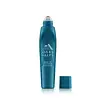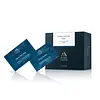What's inside
What's inside
 Key Ingredients
Key Ingredients

 Benefits
Benefits

 Concerns
Concerns

 Ingredients Side-by-side
Ingredients Side-by-side

Water
Skin ConditioningAloe Barbadensis Leaf Juice
Skin ConditioningPropanediol
SolventCarrageenan
Cladonia Rangiferina Extract
Skin ConditioningGlycerin
HumectantPhenoxyethanol
PreservativeCaprylyl Glycol
EmollientBiosaccharide Gum-1
HumectantCaffeine
Skin ConditioningPotassium Sorbate
PreservativeAscorbyl Glucoside
AntioxidantAlbizia Julibrissin Bark Extract
MaskingDarutoside
Skin ConditioningHexylene Glycol
EmulsifyingSodium Hydroxide
BufferingWater
Skin ConditioningPropanediol
SolventPolysorbate 20
EmulsifyingCitric Acid
BufferingAloe Barbadensis Leaf Juice
Skin ConditioningPyrus Malus Fruit Extract
Skin ConditioningAloe Barbadensis Leaf Extract
EmollientCladonia Rangiferina Extract
Skin ConditioningChamomilla Recutita Flower Extract
MaskingCucumis Sativus Fruit Extract
EmollientPanax Ginseng Root Extract
EmollientCamellia Sinensis Leaf Extract
AntimicrobialCitrus Sinensis Peel Oil Expressed
PerfumingCitrus Limon Peel Oil
MaskingVetiveria Zizanoides Root Oil
MaskingCitrus Grandis Peel Oil
MaskingCitrus Tangerina Peel Oil
MaskingCitrus Aurantium Bergamia Fruit Oil
MaskingCaffeine
Skin ConditioningMenthol
MaskingGlycerin
HumectantCaprylyl Glycol
EmollientSodium Laurylglucosides Hydroxypropylsulfonate
CleansingSodium Chloride
MaskingPhytic Acid
Potassium Sorbate
PreservativeSodium Benzoate
MaskingPhenoxyethanol
PreservativeWater, Propanediol, Polysorbate 20, Citric Acid, Aloe Barbadensis Leaf Juice, Pyrus Malus Fruit Extract, Aloe Barbadensis Leaf Extract, Cladonia Rangiferina Extract, Chamomilla Recutita Flower Extract, Cucumis Sativus Fruit Extract, Panax Ginseng Root Extract, Camellia Sinensis Leaf Extract, Citrus Sinensis Peel Oil Expressed, Citrus Limon Peel Oil, Vetiveria Zizanoides Root Oil, Citrus Grandis Peel Oil, Citrus Tangerina Peel Oil, Citrus Aurantium Bergamia Fruit Oil, Caffeine, Menthol, Glycerin, Caprylyl Glycol, Sodium Laurylglucosides Hydroxypropylsulfonate, Sodium Chloride, Phytic Acid, Potassium Sorbate, Sodium Benzoate, Phenoxyethanol
Ingredients Explained
These ingredients are found in both products.
Ingredients higher up in an ingredient list are typically present in a larger amount.
Aloe Barbadensis Leaf Juice comes from leaves of the aloe plant. Aloe Barbadensis Leaf Juice is best known for helping to soothe sunburns. It is also anti-inflammatory, moisturizing, antiseptic, and can help heal wounds.
Aloe is packed with good stuff including Vitamins A, C, and E. These vitamins are antioxidants, which help fight free-radicals and the damage they may cause. Free-radicals are molecules that may damage your skin cells, such as pollution.
Aloe Barbadensis Leaf Juice also contains sugars. These sugars come in the form of monosaccharides and polysaccharides, folic acid, and choline. These sugars are able to help bind moisture to skin.
It also contains minerals such as calcium, 12 anthraquinones, fatty acids, amino acids, and Vitamin B12.
Learn more about Aloe Barbadensis Leaf JuiceCaffeine is most associated with coffee, tea, and cacao. In skincare, it helps with calming inflammation and is rich in antioxidants.
While caffeine is used to treat cellulite and and dark circles, further studies are needed to prove this. It has been believed to help with these skin conditions due to its ability to dilate blood vessels and increase blood flow.
Some studies are looking into caffeine's ability to protect against UV rays.
Learn more about CaffeineCaprylyl Glycol is a humectant and emollient, meaning it attracts and preserves moisture.
It is a common ingredient in many products, especially those designed to hydrate skin. The primary benefits are retaining moisture, skin softening, and promoting a healthy skin barrier.
Though Caprylyl Glycol is an alcohol derived from fatty acids, it is not the kind that can dry out skin.
This ingredient is also used as a preservative to extend the life of products. It has slight antimicrobial properties.
Learn more about Caprylyl GlycolWe don't have a description for Cladonia Rangiferina Extract yet.
Glycerin is already naturally found in your skin. It helps moisturize and protect your skin.
A study from 2016 found glycerin to be more effective as a humectant than AHAs and hyaluronic acid.
As a humectant, it helps the skin stay hydrated by pulling moisture to your skin. The low molecular weight of glycerin allows it to pull moisture into the deeper layers of your skin.
Hydrated skin improves your skin barrier; Your skin barrier helps protect against irritants and bacteria.
Glycerin has also been found to have antimicrobial and antiviral properties. Due to these properties, glycerin is often used in wound and burn treatments.
In cosmetics, glycerin is usually derived from plants such as soybean or palm. However, it can also be sourced from animals, such as tallow or animal fat.
This ingredient is organic, colorless, odorless, and non-toxic.
Glycerin is the name for this ingredient in American English. British English uses Glycerol/Glycerine.
Learn more about GlycerinPhenoxyethanol is a preservative that has germicide, antimicrobial, and aromatic properties. Studies show that phenoxyethanol can prevent microbial growth. By itself, it has a scent that is similar to that of a rose.
It's often used in formulations along with Caprylyl Glycol to preserve the shelf life of products.
Potassium Sorbate is a preservative used to prevent yeast and mold in products. It is commonly found in both cosmetic and food products.
This ingredient comes from potassium salt derived from sorbic acid. Sorbic acid is a natural antibiotic and effective against fungus.
Both potassium sorbate and sorbic acid can be found in baked goods, cheeses, dried meats, dried fruit, ice cream, pickles, wine, yogurt, and more.
You'll often find this ingredient used with other preservatives.
Learn more about Potassium SorbatePropanediol is an all-star ingredient. It softens, hydrates, and smooths the skin.
It’s often used to:
Propanediol is not likely to cause sensitivity and considered safe to use. It is derived from corn or petroleum with a clear color and no scent.
Learn more about PropanediolWater. It's the most common cosmetic ingredient of all. You'll usually see it at the top of ingredient lists, meaning that it makes up the largest part of the product.
So why is it so popular? Water most often acts as a solvent - this means that it helps dissolve other ingredients into the formulation.
You'll also recognize water as that liquid we all need to stay alive. If you see this, drink a glass of water. Stay hydrated!
Learn more about Water